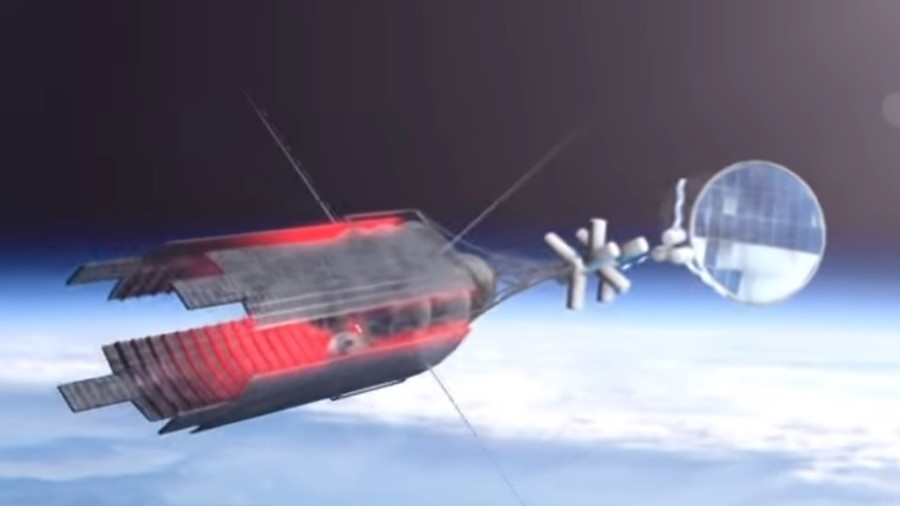Russia unveils reusable rocket engine
November 15, 2018 | Expert Insights

A leading Russian space research centre has posted a video of its nuclear-powered rocket, that will be able to land on Mars in seven months, and can be re-launched into space just 48 hours after landing.
The space research centre also targeted SpaceX’s Elon Musk by describing his famed reusable rockets as “old tech”.
Background
The State Scientific Centre Keldysh Research Center is a research institute in Moscow, Russia. Prior to World War II it was known as the Research Institute for Jet Propulsion and was responsible for the development of the Katyusha rocket launcher. Until 1991 it was known as the Scientific Research Institute of Thermal Processes conducting research and development in the areas of electrophysics, space instrumentation, propulsion, and power units.
It is now named after M. V. Keldysh, one of the key figures behind the Soviet space program. It is a Federal State Unitary Enterprise that is part of the Russian Space Agency.
Elon Musk is a South African-born Canadian American business magnate, investor and inventor. He is listed by Forbes as the 53rdrichest person in the world. As of January 2018, his net worth is $20.9 billion. Best known as the Founder, CEO and CTO of SpaceX, a private aerospace manufacturing and space transport services company, Musk is known for his aspiration to enable the colonisation of Mars, and reduce costs of space travel within the next two decades.
Analysis
A leading Russian space research centre has posted a video of its nuclear-powered rocket, that will be able to land on Mars after seven months, and can be re-launched into space just 48 hours after landing.
“A mission to Mars is possible in the very near future, but that’s not an aim in itself. Our engines can be the foundation for a whole range of space missions that currently seem like science fiction,” Vladimir Koshlakov, who heads Moscow’s Keldysh Research Center told Rossiyskaya Gazeta.
The institute, which is famous for developing the Katyusha rocket launched during World War II, has been working on what it says is a “unique” propulsion system since 2009. From past descriptions, it comprises a gas-cooled fission reactor that powers a generator, which in turn feeds a plasma thruster.
Various nuclear reactors were deployed in space by both the Soviets and NASA between the 1960s and the 1980s but, although Koshlakov has refused to name a date for when the new engines will be ready, he says they “will surpass the existing level of technological and scientific development.”
“Reusability is the priority,” said Koshlakov, himself a scientific researcher, specializing in heat transfer and mathematics modelling, “We must develop engines that do not need to be fine-tuned or repaired more than once every ten flights. Also, 48 hours after the rocket returns from space, it must be ready to go again. This is what the market demands.”
Questioned on whether he might be beaten to the punch by foreign companies, particularly more agile private corporations such as Elon Musk’s SpaceX, which is planning its own mission to Mars, Koshlakov was unconcerned. “Elon Musk is using the existing tech, developed a long time ago. He is a businessman: he took a solution that was already there, and applied it successfully. Notably, he is also doing his work with help from the government,” he concluded.
Russia’s targeting of Musk was expected as SpaceX was chosen over Russia by Kazakhstan to launch its domestically-built satellite. Kazakhstan has been a steady client for Russia’s state-run space agency since 1992 and also houses the Russian-leased Baikonur Cosmodrome, Moscow’s only operational launch pad.
Assessment
Our assessment is that SpaceX and Musk’s radical ideas have finally starting to influence the global space launch market. We believe that SpaceX’s low cost, high efficiency and innovative designs have disrupted the market, leaving the Russian space agency lagging behind and almost uncompetitive for small payloads. We also feel that this disruption of the space launch market will see a rapid deployment of new innovations on decades-old launch platforms and launch systems.








Comments